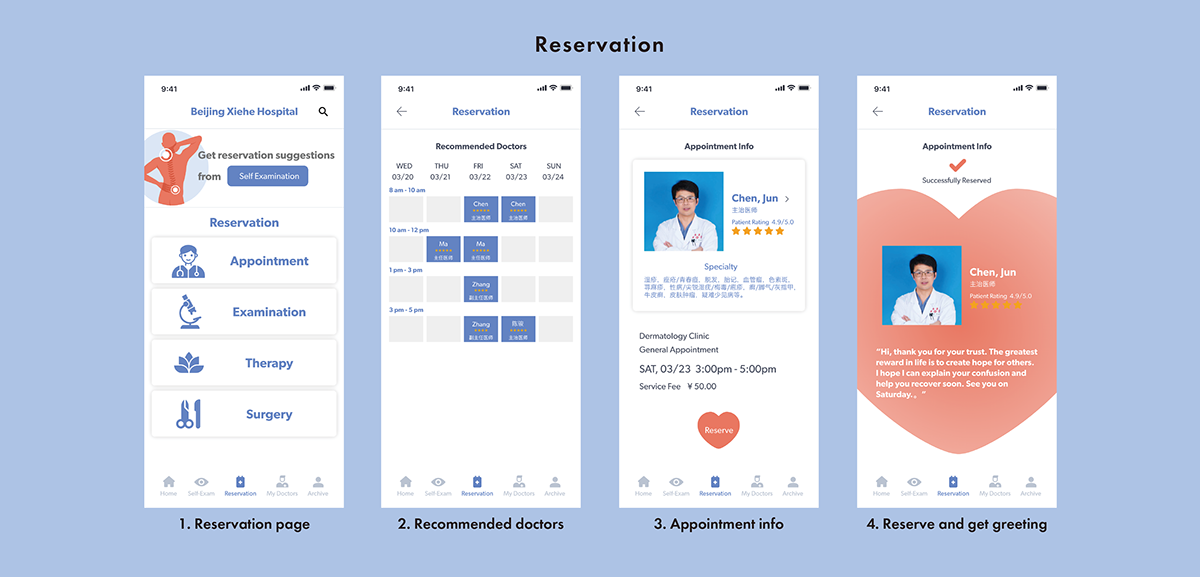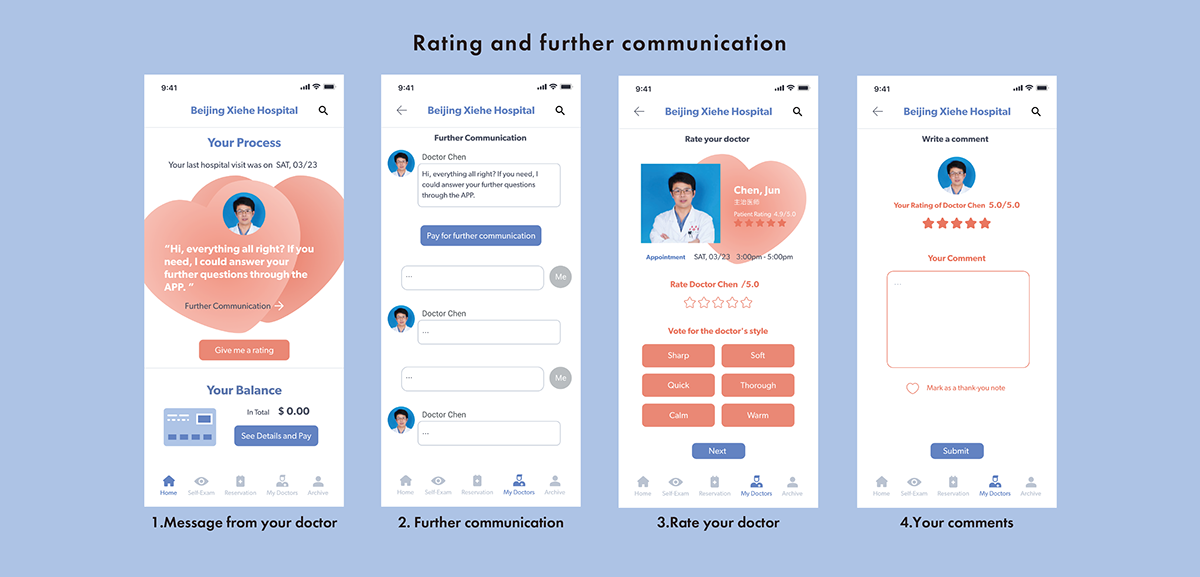Doctor-Patient Relationship in China
OVERVIEW
Worsening relationship between doctors and patients in China has been going on for decades. In addition to the issue of the healthcare system in China, the problem also resulted from mutual misunderstanding and lack of trust between the two groups. The aim of the thesis is to define opportunities to tackle the problem from a design perspective.
The design solution the thesis provides is a hospital-level application for top public hospitals in China. By providing patients with reliable knowledge about diseases and personal touch points with the doctor, the application prepares them for better face-to-face communication with the doctor and facilitate their communication during the possible hospitalization time as well as after the hospital visit, which could help build empathy and reduce the long-lasting tension between doctors and patients in China.

Check the video first to get a brief idea of the issue in China and how the design solution provides a practical way to tackle it.
PROBLEM STATEMENT
How might we improve doctor-patient relationship in China?
Medical disputes and related violent incidents have been a severe issue in China for decades. Research conducted by the Chinese Medical Doctor Association in 2016 and 2017 shows that,

Doctors' deaths and injuries in these incidents have made the tension between doctors and patients very high and it is impacting the mutual respect and trust. As an urgent need in China, improving the doctor-patient relationship has been mentioned in the Health China Plan in the 13th Five-year Plan, formulated by the People's Republic of China for the development of the national economy from 2016 to 2020.
RESEARCH OVERVIEW
Research Question
What creates the tension between doctors and patients in China?
Research Process

SECONDARY RESEARCH
History of the Tension

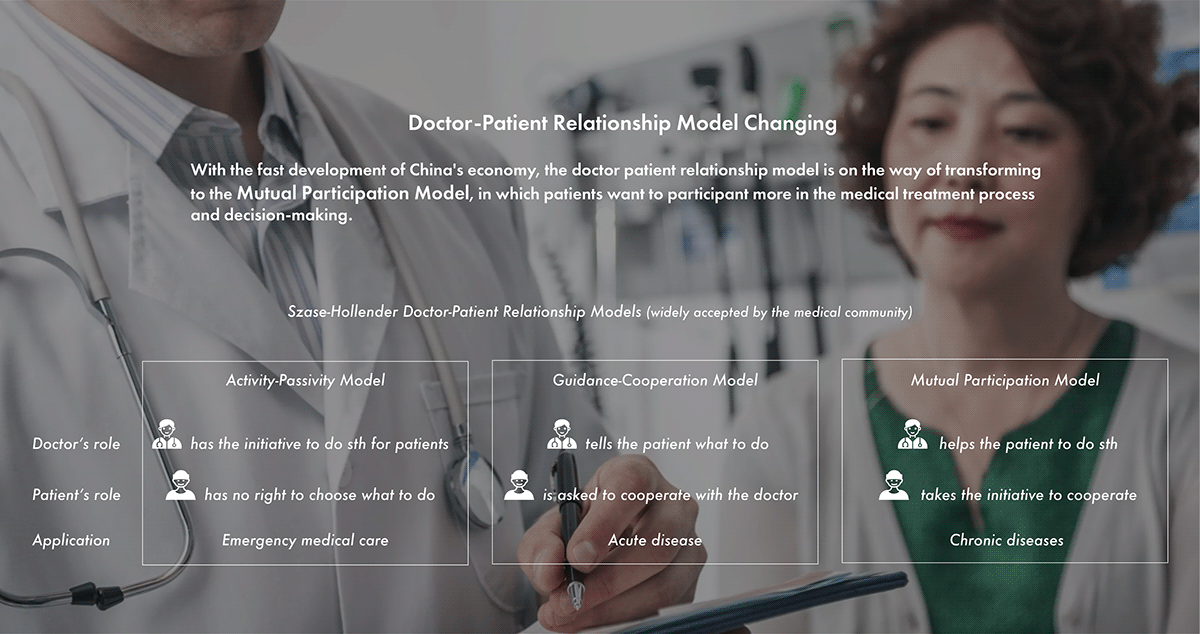
Healthcare System in China



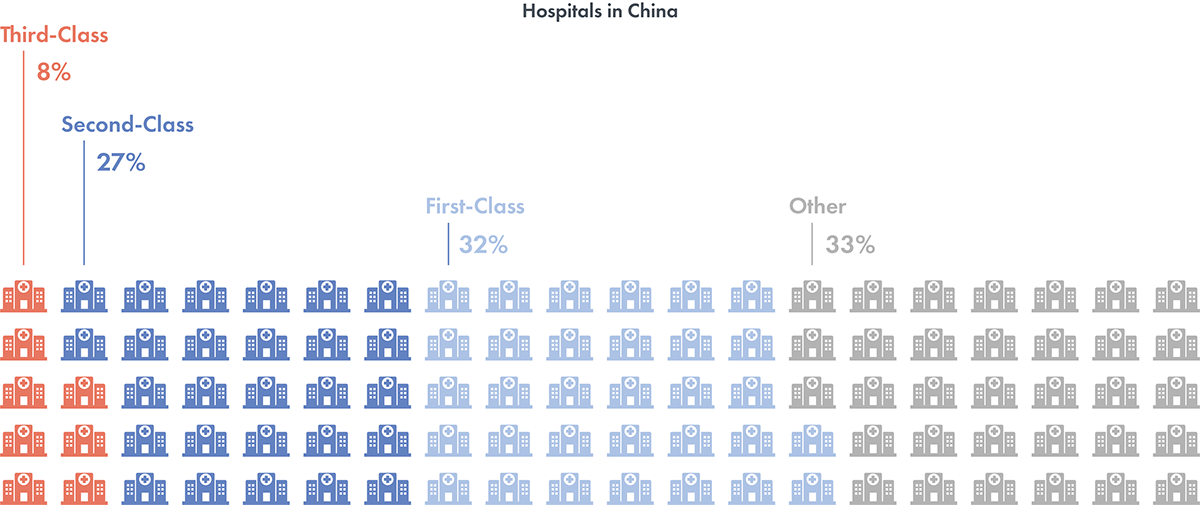
Internet Impact
With the development of Internet technology, it is convenient for patients to acquire medical knowledge related to their diseases, which is conducive to changing the information asymmetry between doctors and patients, but also leads to the decline of doctors' wisdom and authority in patients' eyes.
- Challenges brought by Internet
Misleading information is disseminated to patients by the Internet.
Patients may suspect the doctor's proper treatment because of the wrong information on the Internet.
Some doctors feel great pressure when facing knowledge-based patients who dare to challenge.
Media Coverage Impact
Media reports have a certain impact on the audience's perception of the number of doctor-patient disputes happening. The audience's assessment of the number of doctor-patient disputes in China is more than that in reality.
Medical Disputes Analysis


According to analysis of 801 cases of medical disputes that happened in a district in Nanjing (a major big city in China) from 2008 to 2013, most disputes happened in Third-Class A-Level hospitals. Both the crowded environment and the difficult illness cases of the patients create high potential of conflicts.
In addition, the surgery department has the highest potential of medical disputes and medical conflicts in a hospital in China.
Current Efforts in China to Improve Doctor-Patient Relationship

PRIMARY RESEARCH
Considering the efforts made in China to improve doctor-patient relationship, their main focus is helping build a more convenient experience of seeing a doctor or the effort is only from one side's perspective like efforts from hospitals. The objectives of primary research are to understand and integrate needs and experiences of different stakeholders at a human level, to learn what patients' and doctors' emotional journeys are like, what is important for them during their interactions and how a trusted relationship could be like and could be built.
Sampling
Due to the sensitivity of health related issues and the difficulty of getting access to interviewing patients and doctors, sampling technique used in this study is purposive sample(snowball sample).
According to Medical disputes analysis in secondary research, sample of doctors are surgeons in third-class A-level hospitals in Beijing, 31~44 years old. Sample of patients are surgery patients in third-class A-level hospitals in Beijing.
Blogs Reading
To get well prepared for interviews with the target audience, I read both doctors' and patients' blogs across different media(Weibo, Zhihu...) where they wrote about their experience related to healthcare, their suffering and their expectation.
Interviews




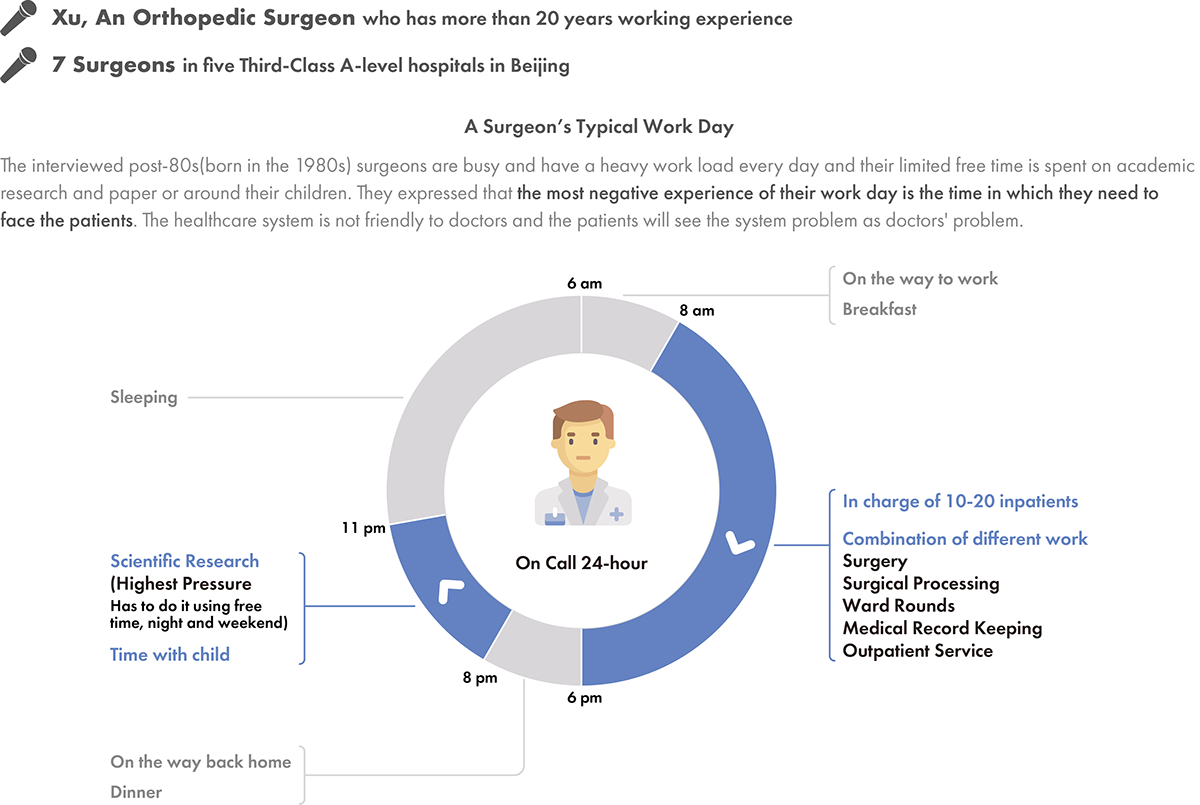
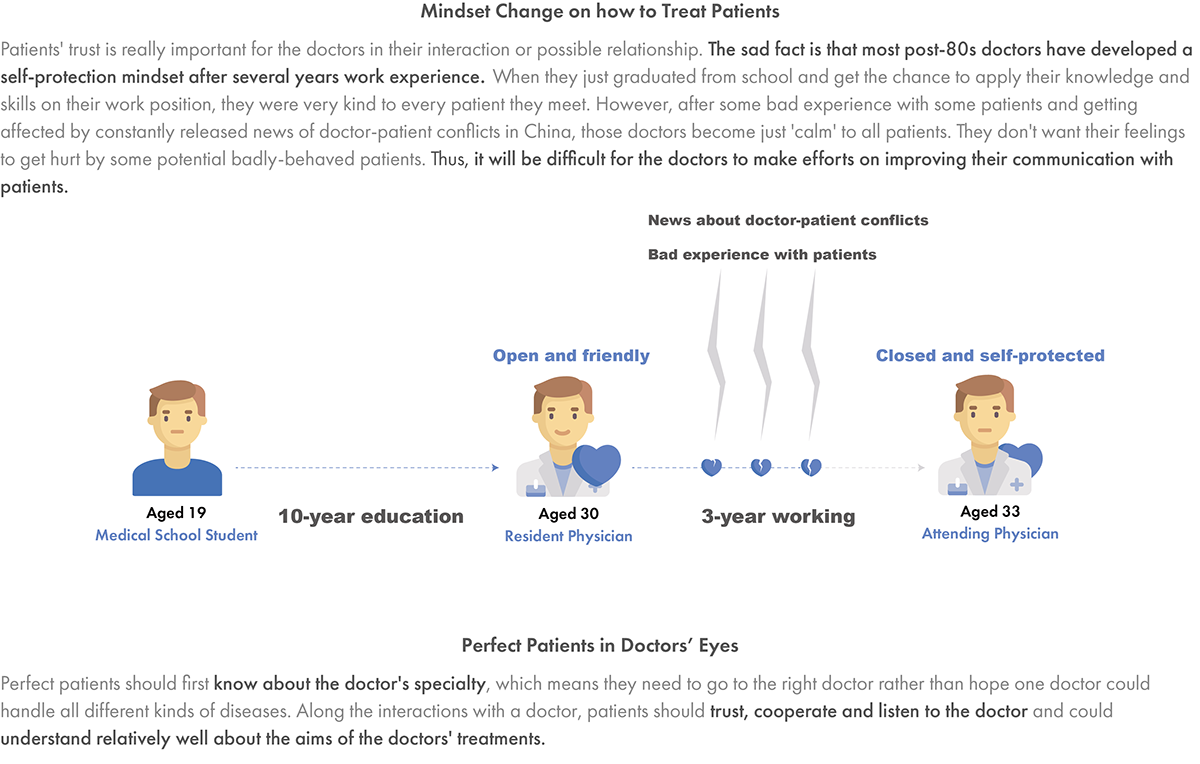
Observation

Observation at third-class A-level hospitals were conducted during my field trip in Beijing to better understand patients and doctors' experience.
Real interactions between a doctor and a patient were observed in a general surgeon's office. In their communication, the doctor tended to give professional yet brief explanations to the patient based on his professional knowledge. However, the patients always worried a lot more. So the patients kept asking questions, some of which were from their own research on the Internet. The patients always wanted a distinct conclusion and to know more about the seriousness level of his condition.
Patients' behavior during the waiting time for an appointment with a doctor was observed at the waiting area of general surgery department in Peking Union Medical College Hospital. I waited together with those patients and recorded their waiting time. Patients around me all waited more than one and a half hours before they got called to the appointment. They started to become anxious as they waited more than half an hour. And during the wait time, most patients are engaged in their smart phones.
ANALYSIS
Key Insights
What creates the tension between patients and doctors in China?
- System Issues
System issues including medical reform issues, government’s low investment in healthcare, lack of functioning primary care and the unbalanced three class hospital system are all basic factors for the tension between doctors and patients in China, which could only be tackled at the state level. Although the government is now working on these issues, there is a long way to go.
- Time Issue

- Mutual Misunderstanding

Target Group

Competitive Analysis

DESIGN SOLUTION
The solution is a hospital-level application for Third-class A-level public hospitals in China.
Since the short and limited face-to-face interaction time with a doctor is difficult to change as a problem of the healthcare system in China and the doctors are too busy to initiate extra communication with the patients, the application employs mostly the patients' time through the seeing-a-doctor experience to improve their relationship with the doctors.

Channel / Why Application?
High ownership rate of smart phones of the Chinese population.
Most patients are killing time by using their smart phone through their seeing-a-doctor process, especially when they need to wait.
Hospitals themselves are transmitting their services from human services to applications.
User Test
- Test with Patients
Seven patients in China participated the test. They were asked to walk through paper prototypes of the application in 3 major scenarios in their seeing-a-doctor process. In each scenario, they received and read different information of the doctor. They were asked to put down any thoughts of questions related to the interfaces on the paper prototype.
For most participants, knowing better about the doctor through the application increases their overall trust of the doctor.



- Validation with Doctors
During the ideation phase, patients' ways of showing thanks was an area I would like to explore. However, though doctors interviewed enjoy patients showing thanks to them, they don't care much about the way of showing thanks. They value more about a patient's cooperation and trust, which is the "best thanks" for them.
User Flow
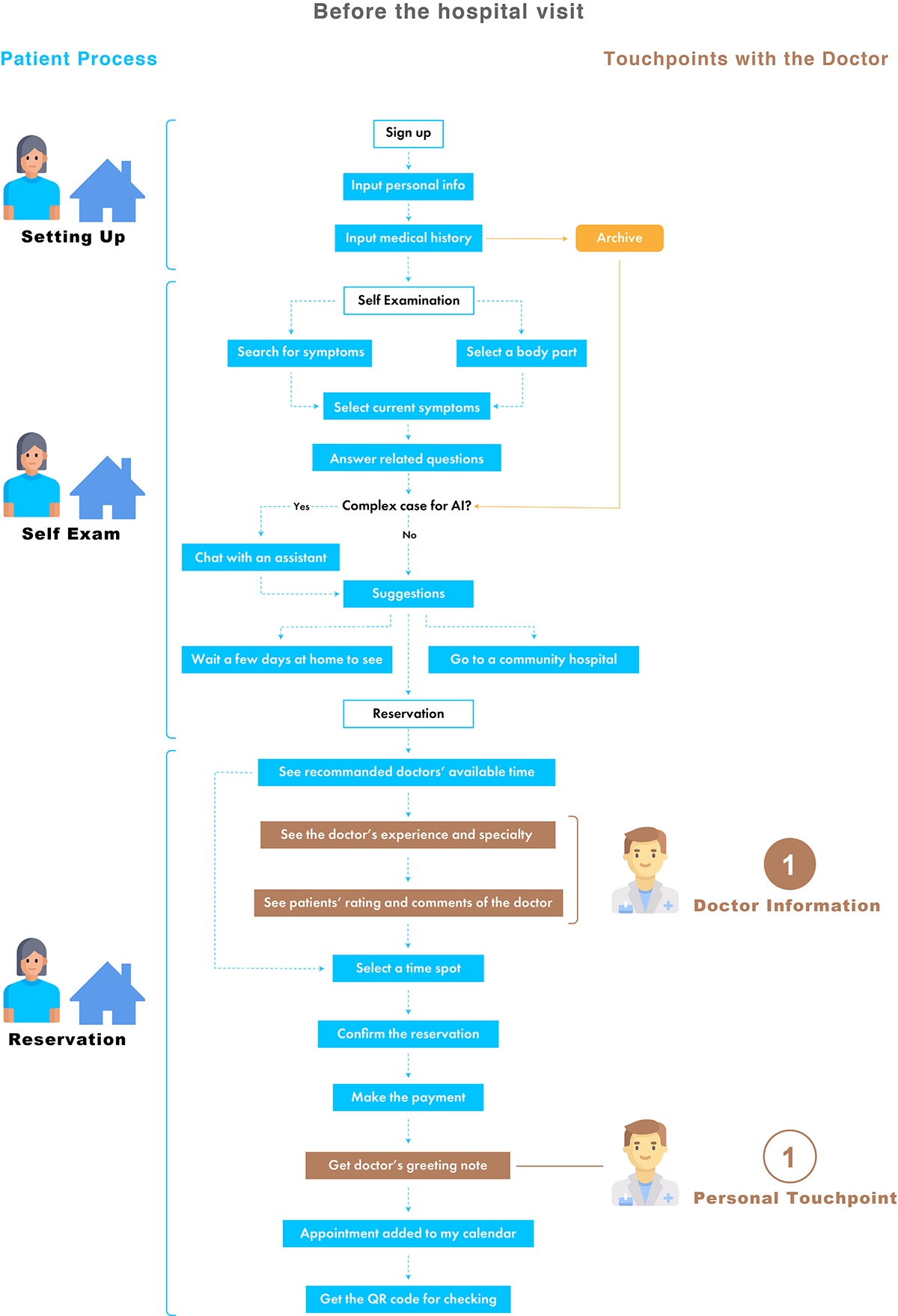
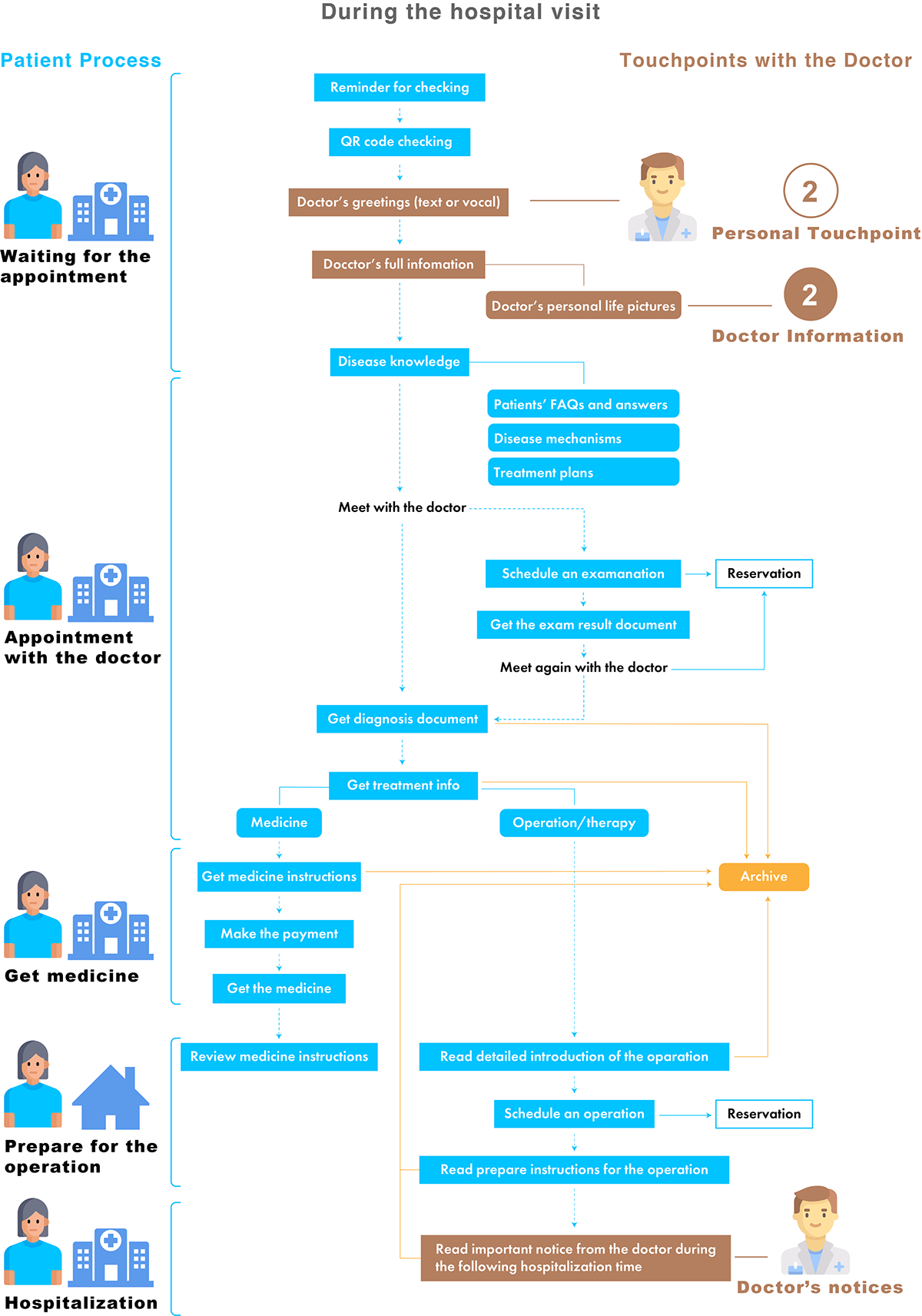
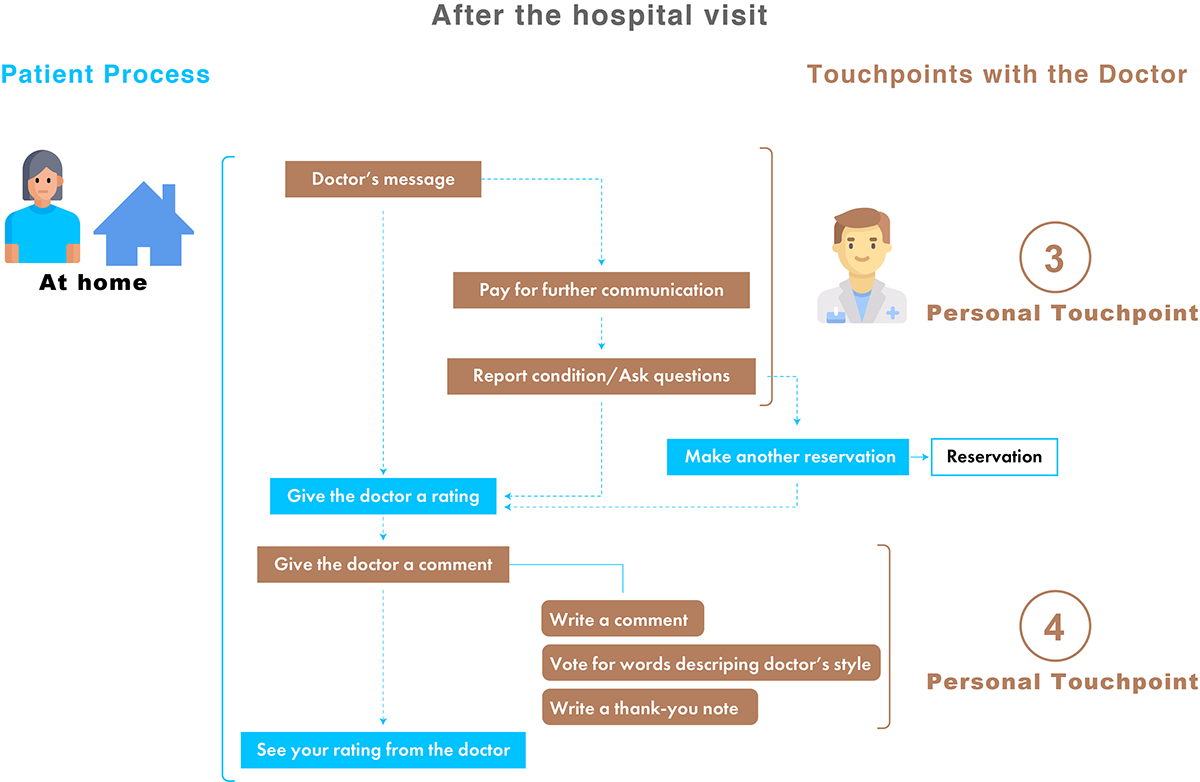
Wireframe

Visual Design
- Tone of the Voice
The tone of the application is defined as being Trustworthy, Empathetic and Optimistic. The aim is to encourage patients' trust and empathy with the doctor and have an optimistic influence on the patients' expectation of their conditions.

- Color Scheme, Logo and Fonts

- User Interface

